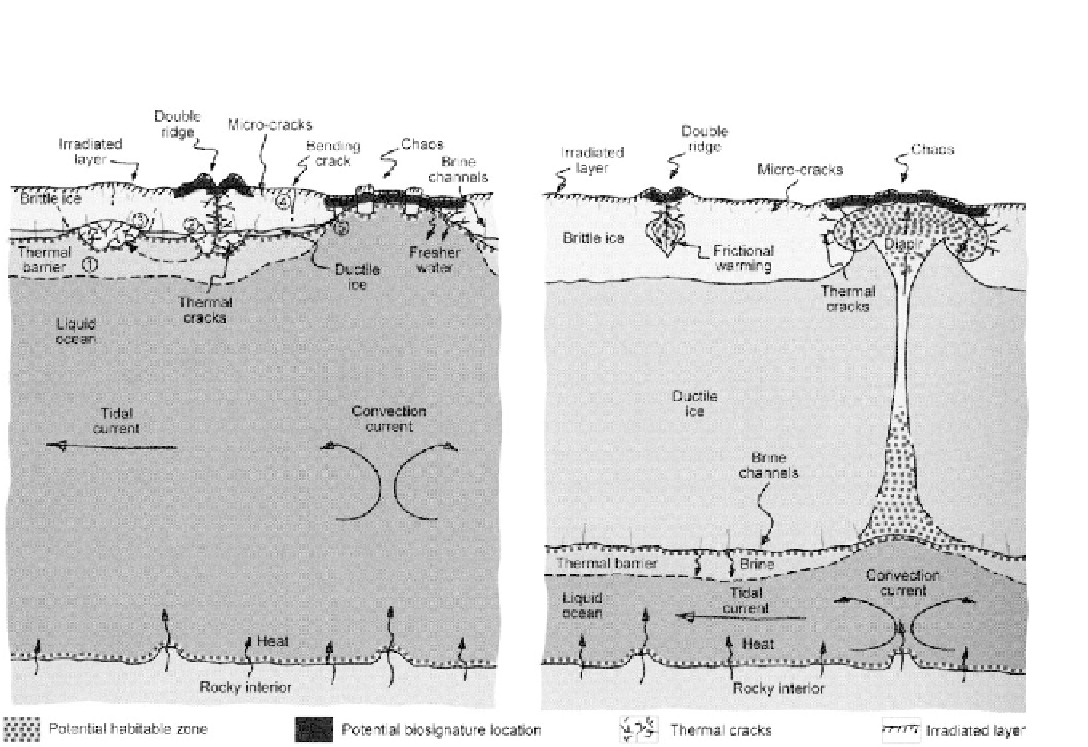Geology Reference
In-Depth Information
Figure 8.27. A stylized block diagram of Europa
s crust showing the possible relations of surface features to processes within the icy crust for
a thin ice shell (left) and a thick ice shell (right): diapirs and convection could cause thermal perturbations and partial melting in the overlying rigid
ice; faulting driven by tidal stresses could result in frictional heating; and impacts could lead to refrozen central melt zones and
'
of
ejected ice and slush. Many of the zones and features shown here could be habitats for astrobiological exploration (from Figueredo et al.,
2003
).
“
splash
”
Dark terrain constitutes about 35% of the surface and
includes large polygonal regions separated by younger
grooved terrain. The most extensive region of dark ter-
rain includes Galileo Regio, a semicircular area more
than 3,200 km across on the leading hemisphere. The
numerous impact craters superposed on the dark terrain
re
ect the period of intense bombardment in the
nal
stages of Solar System formation. However, when craters
on Ganymede are compared with those on the inner
planets, relatively few craters larger than 60 km in diam-
eter are found. Such craters might have been obliterated
by some unknown process, or perhaps the cratering
record is different for the outer and inner parts of the
Solar System.
Bright terrain forms by the conversion of dark terrain,
primarily through extensional tectonic processes
(Fig. 8.29)
. For example, linear bands of grooved terrain,
called sulci, dissect and convert many parts of the older
terrain. Bright terrain occupies most of the polar areas and
occurs as a zone hundreds of kilometers wide around
Galileo Regio, as well as forming large patches in the
southern hemisphere. Bright terrain is characterized by
sets of ridges and grooves 100 km or more long by tens
of kilometers wide. Individual ridges are several kilo-
meters wide and may be as high as 700m.
Although not physiographic in the sense of landforms,
Ganymede exhibits distinctive characteristics in both
polar regions. Above about 40° latitude, the surface
shows bright diffuse deposits called
“
polar hoods,
”
which are probably concentrations of ice or frost formed
by the migration of volatiles from lower latitudes. High-
resolution images of parts of the polar hood boundaries
suggest that the deposits thin toward the equator, forming
an irregular, mottled appearance.
8.6.2 Impact features
Ganymede
'
s impact craters range in diameter from tens of
meters to hundreds of kilometers, with larger craters being
more shallow. The relationship between crater size and


